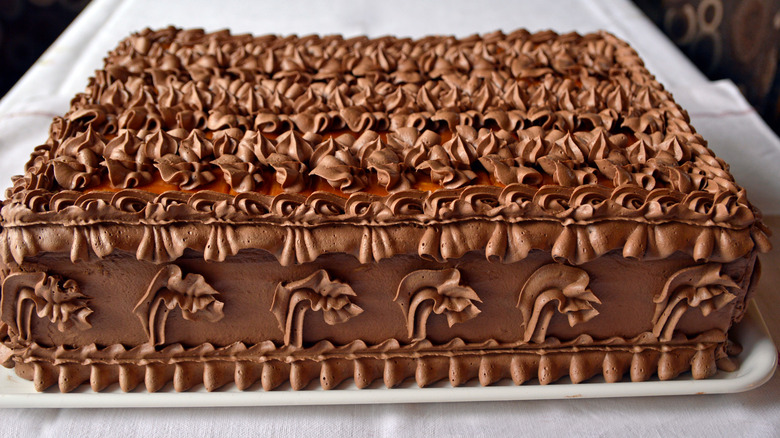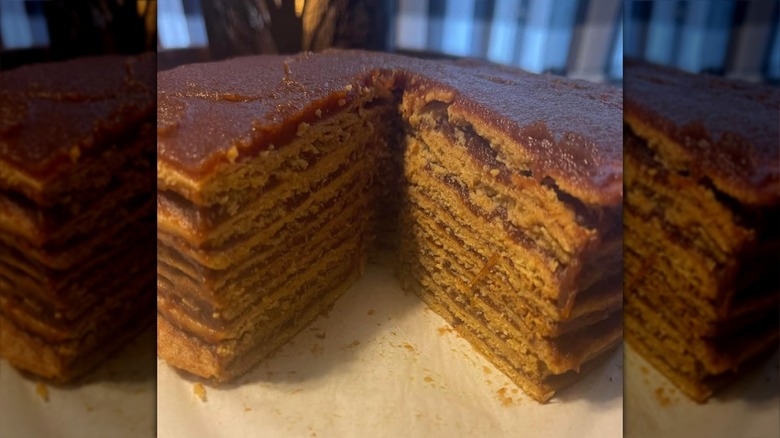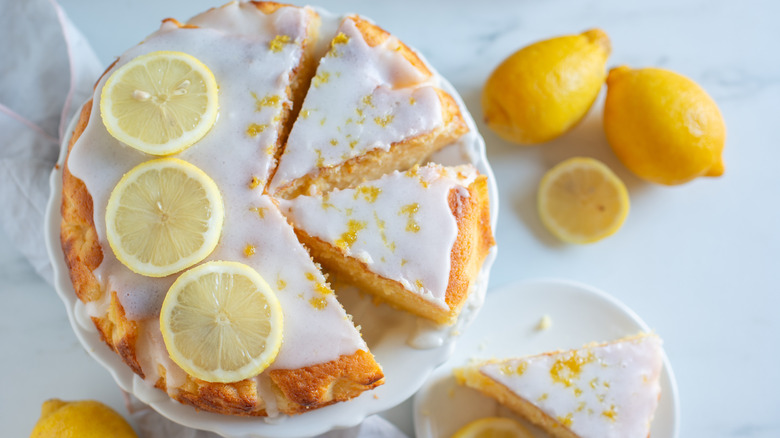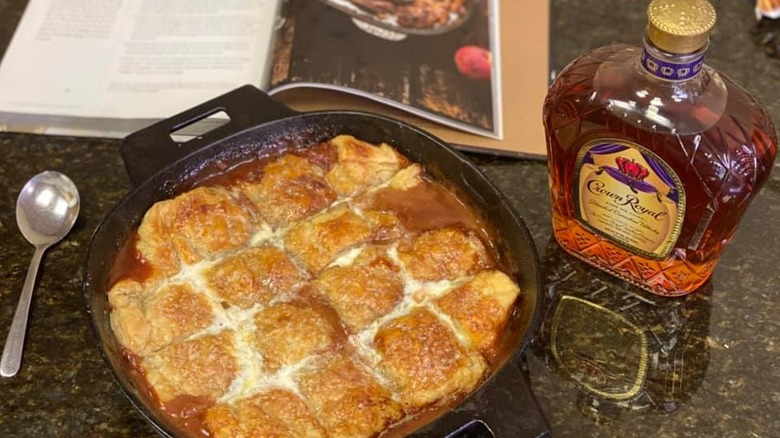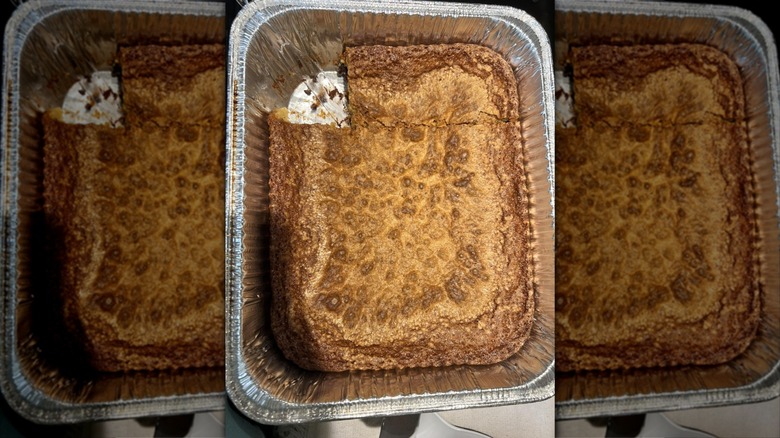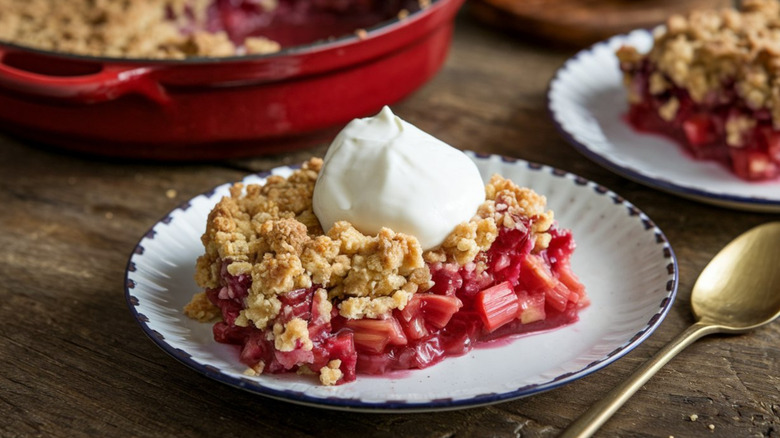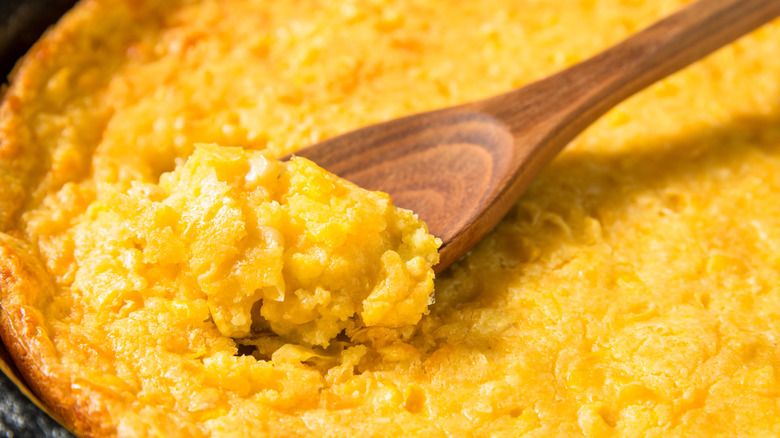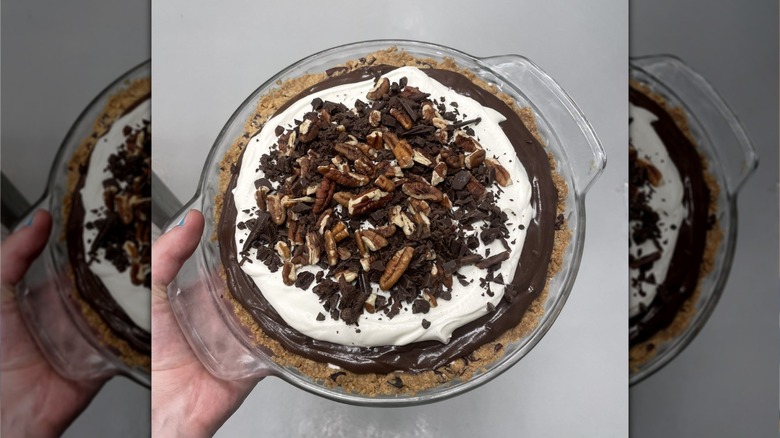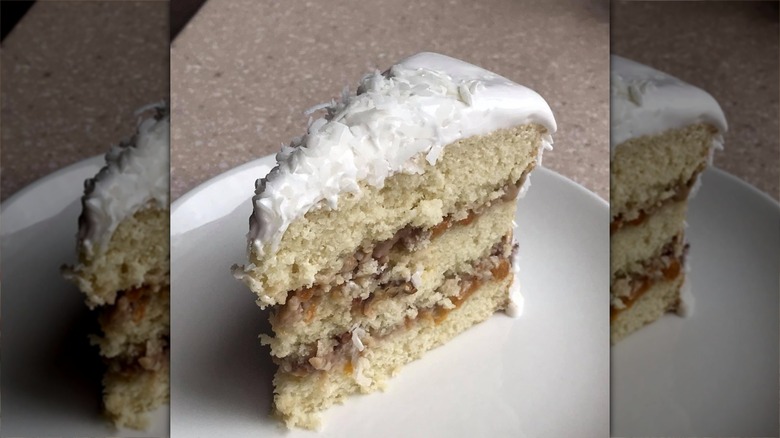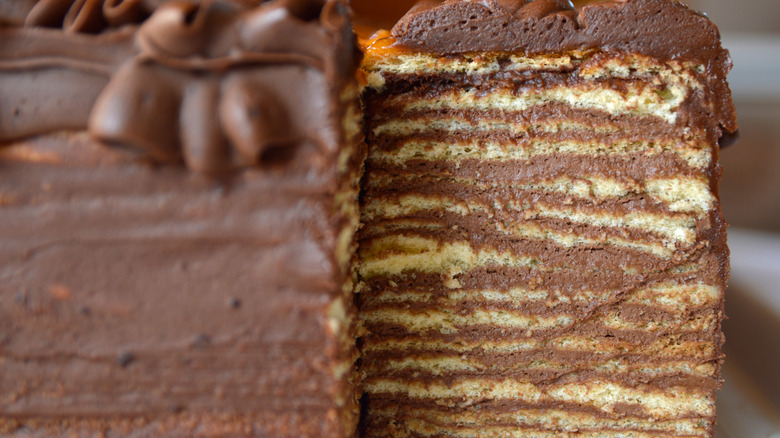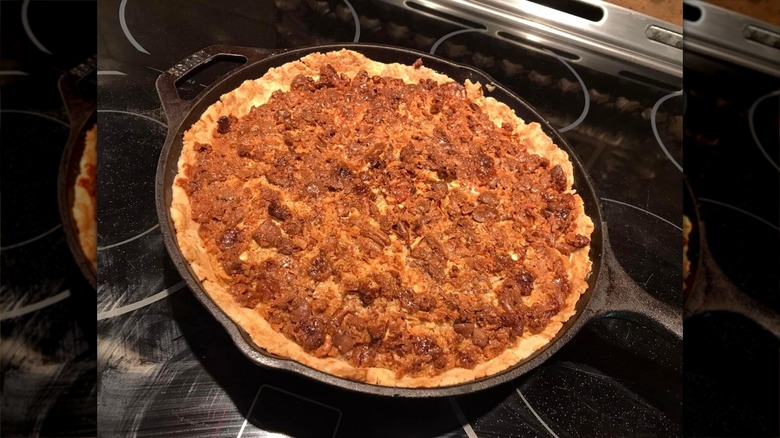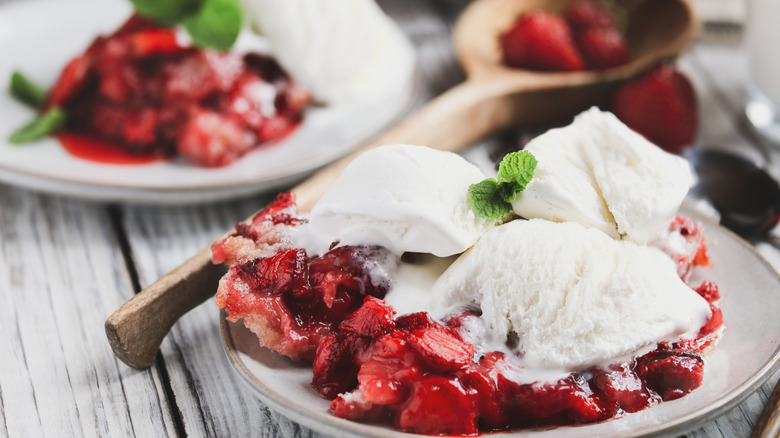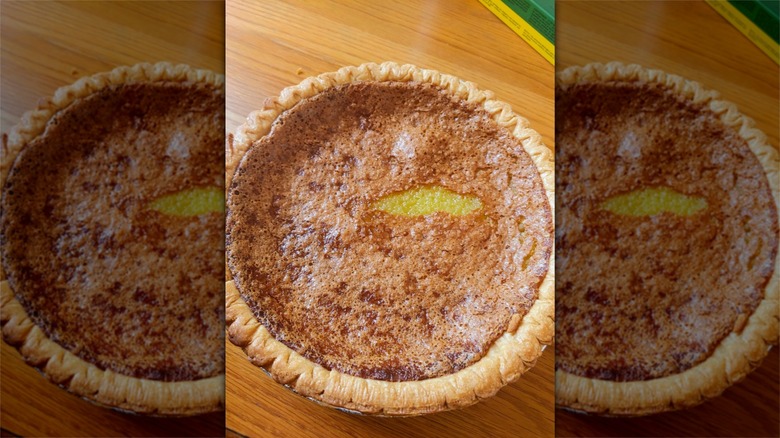Vintage Southern Desserts That Deserve A Comeback
All things sweet are synonymous with the cuisine of the American South, from pralines and powdered sugar-covered beignets in New Orleans to smooth Tupelo honey and airy, light divinity. Throughout history, these sugary treats have been associated with iconic Southern hospitality and are shared as a token of love and appreciation at holiday gatherings and during festive celebrations such as Mardi Gras and the Kentucky Derby. These candies, confections, and desserts are more than just sweet treats; they also celebrate the region's rich cultural heritage. Recipes have been passed down through generations, satisfying both sugar cravings and the desire to fully grasp the important role that food plays in the South.
The one constant in life, however, is change, and it has affected even the most time-tested of Southern desserts. Changing tastes, the availability of certain ingredients, dietary sensitivities, and a bigger focus on healthy living are just some of the reasons why some once-loved Southern desserts have faded into near obscurity. Desserts that made dinner guests swoon back in the day now only live on as stained recipe cards in the back of grandma's box. We think that it's time for some of these mouthwatering vintage desserts to make a comeback, starting with these 12 drool-worthy puddings, pandowdies, and pies.
Apple stack cake
Apple stack cake is a beloved dessert rooted deeply in the traditions of the Appalachian region. The sweet confection features a spiced apple filling and originated as a heartfelt alternative to pricey wedding cakes since the fruit grows in abundance in the mountain region. It's said that friends and loved ones would contribute to the cake's layers as they arrived at the celebration, with a taller dessert saying everything about a bride's popularity. Today, both Kentucky and Tennessee claim to be the birthplace of apple stack cake, with each area putting its own unique sugary spin on the sweet treat.
The humble yet delicious cake is still likely a nostalgic favorite in specific regions, but overall, it is widely forgotten. To create this vintage cake in your kitchen, you'll need several cups of dried, unsulphured apples, various cozy spices such as nutmeg, ginger, and cinnamon, as well as the likes of buttermilk, sorghum molasses, and plenty of brown and white sugar. The cake traditionally stands at least five layers high, but you can go even higher if you're planning a large, Southern-style soiree.
Robert E. Lee cake
A quintessential vintage dessert, Robert E. Lee cake is a nod to all things Southern. The light and spongy cake is infused with the flavors of lemon and orange, and features a sweet, citrusy glaze. It's said that the recipe was first written in 1879 in honor of the Civil War general, almost a decade after his death. Legend has it that Robert E. Lee proposed to his wife over a slice of this cake, hinting at a reason that the dessert was named after him. The cake became a staple in Southern cookbooks and was very well-liked during the 19th century, although it's fallen out of popularity in modern years.
The delicate cake is made with eight to ten eggs and is layered with a tangy lemon-flavored filling, making it the ideal light treat for hot Southern days. What sets this cake apart from other vintage Southern desserts is its signature airy texture, derived from the use of baking soda, which was a relatively uncommon baking ingredient at the time. This flavorful tribute to a historical figure from a bygone era would make a delicious ending to a dinner even now, especially when topped with properly zested citrus.
Peach pandowdy
Peach pandowdy is the perfect example of why you shouldn't judge a dessert by its appearance. This rustic, old-fashioned dessert likely received its interesting name due to the fact that it looked dowdy or unrefined compared to more aesthetically pleasing fruit pies with impressive lattice tops. The satisfying Southern dessert got its roots in early American kitchens, where fresh and readily available ingredients were prioritized. Peaches are popular crops in several Southern states, which explains why peach, rather than the more common apple pandowdy, was made there.
What makes pandowdies unique and different from their more well-known cousin, fruit tarts, is that the crust is intentionally broken and pressed into during the baking process. This technique is used so that the bubbling peach mixture is absorbed by the flaky dough to create an irresistibly gooey texture. Consider making this vintage dessert the next time you crave a golden crust overflowing with a rich, syrupy filling. Include some ginger powder and candied ginger in the fruity mix for a surprising flavor twist. The recipe is versatile because you can use any type of fruit, including mangoes, nectarines, berries, and cherries, to customize it to your liking.
Chew bread
With roots in Black culinary tradition, rich and decadent chew bread is best described as a cross between a blondie bar and a pecan brownie. It's said that chew bread most likely began with sharecroppers, who made it with leftovers. Depending on where you are in the South, chew bread is referred to as cornbread cake or chewies, among other names. The chewy dessert had a surge of popularity in the mid-20th century, after a recipe appeared in the Greensboro Daily News. It was traditionally served as a snack or as a sweet treat at church gatherings during its heyday. It could also be used as a side dish, with the dense baked good pairing equally well with savory flavors.
This simple yet delicious treat is made with refrigerator and pantry staples such as eggs, flour, salt, brown sugar, vanilla extract, and pecans. After combining all of the ingredients, pour the mixture into a greased brownie pan and bake for around 15 minutes. After the chew bread cools, cut it into squares and drizzle with caramel sauce if you want to make it taste even more delectable.
Strawberry rhubarb crisp
Strawberry rhubarb crisp is a vintage dessert that captures the essence of spring and summer in each sweet yet tart bite. The syrupy filling bubbles under the crisp crust when pulled out of the oven, making it a decadent treat worthy of a kitchen comeback. Strawberry rhubarb crisp originated in households where resourceful bakers combined sour rhubarb — which was introduced by European settlers – with naturally sweet strawberries, a native fruit. The unexpected duo, when combined with other pantry staples such as flour and sugar, created a seasonal taste sensation. Even though rhubarb is the ideal addition to fruity pies, it's important not to ingest its toxic leaves.
What sets crisps apart from pies is that they don't require a rolled crust and are instead topped with a buttery oat crumble. The crunchy, golden topping provides the perfect contrast to the syrupy fruit filling underneath. After being prepared in Southern kitchens, strawberry rhubarb crisps were most likely passed around at church potlucks and holiday celebrations. You can make one today for a bit of nostalgia, and don't forget to top it with vanilla ice cream or whipped cream as a modern touch. If you prefer, substitute other types of berries, cherries, or tart, crisp apples for the strawberries and rhubarb.
Cornbread pudding
Cornbread pudding is a tasty vintage dessert that hits all the right notes — sweet, creamy, and a bit salty. The dish has its roots in Southern kitchens, where leftover cornbread or cornbread mix was combined with ingredients such as milk, butter, and eggs, which made the dessert rich and decadent. Some recipes also included actual corn, adding some textural variety to the dish.
Popular thanks in no small part to its readily available and inexpensive ingredients, this humble dessert evokes warm feelings of nostalgia and visions of old-school potluck tables. While it's no longer quite as common a dish as in the past, it's definitely worth a try. If you prefer your corn on the savory side, you can also turn cornbread pudding into a side dish by enhancing it with cheese, onions, bacon, or even a can of black beans.
Possum pie
The good thing about possum pie is that, despite its whimsical name, it contains no marsupials. This vintage Southern dessert — which dates back to at least the 1980s — is over-the-top decadent, featuring layers of velvety chocolate and cream cheese in a buttery pecan shortbread crust. Even though it has a playful moniker, this dessert is seriously delicious, with each bite a symphony of crisp, silky, and creamy textures. This beloved Arkansas treat got its name because, similar to how a possum often tricks observers by playing dead, its whipped topping fools the uninitiated by concealing the cocoa-infused layers underneath. Once the unsuspecting dessert-lovers dig their forks into the pie, they're delighted by the pudding center.
Possum pie is sometimes topped with chocolate shavings and pecans, adding even more layers of richness and flavor. Over the years, the dessert has picked up alternative names, including chocolate layer pie, chocolate lush, and four-layer pie, but none are as endearing as the original. You can make this dessert, which is considered legendary in the state of Arkansas, by combining basic ingredients such as cream cheese, butter, egg yolks, cocoa powder, vanilla extract, and milk, and pouring the mixture into a homemade or store-bought, pecan-studded crust. In a pinch, a graham cracker crust will also work. Just don't forget the top layer of whipping cream to fool your dinner guests.
Lane cake
Rich and indulgent, Lane cake is about as Southern as a dessert can get. The vintage confection features layers of airy sponge cake with a bourbon-soaked filling, all topped with fluffy meringue frosting. The delicacy was created by Alabama resident Emma Rylander Lane, who won the award for prize cake at a county fair in the late 19th century. The dessert was a culinary hit that gained even more popularity when the recipe appeared in Lane's "Some Good Things to Eat" cookbook in 1898. Later on, the cake was featured in the famous novel "To Kill a Mockingbird," where it was mentioned multiple times, and in the March 1966 issue of Southern Living Magazine. The elegant cake was a common sight at special events such as weddings and holiday celebrations.
It may not pop up as often today, but the sponge cake's filling is still an explosion of flavors and textures worth trying due to the addition of the booze (don't worry, it won't get you or your kids drunk), as well as sugar, butter, eggs, coconut, raisins, and even other types of dried fruit such as candied cherries. The luscious filling may also feature various nuts, including almonds and pecans, as well as freshly grated orange zest as a bright, vibrant touch. Although Lane cake may require several hours in the kitchen to perfect, it's worth every decadent bite.
Doberge cake
Like many things on the New Orleans culinary scene, chocolatey doberge cake is excessive and indulgent in all the best ways. This classic dessert typically features at least six layers of moist white cake alternated with chocolate or lemon custard filling. New Orleans baker Beulah Ledner created the cake in the 1930s after being inspired by the Hungarian Dobos torte. One unique aspect of doberge cake is that it's typically topped with a glossy glaze rather than traditional frosting, giving it a more elegant appearance.
Although the dessert is still a staple at celebrations during Mardi Gras and holidays in New Orleans, it has arguably fallen from popularity in other parts of the country. But with its fusion of flavors, doberge cake is the perfect candidate for a vintage dessert comeback. If you don't feel like making this exquisite cake at home, the good news is that you can still find it in New Orleans' Gambino's Bakery. When Ledner sold her bakery to Joe Gambino in 1946, she also passed along her famous doberge cake recipe. To this day, Gambino's makes its vintage cakes according to the original recipe, crafting the custard filling and spongy layers from scratch.
Texas trash pie
Despite its surprisingly quirky name, the last place that Texas trash pie deserves to be is in the garbage bin. Created in Round Top, Texas, in 1987 by the owners of the Royers Round Top Cafe, the pie has become one of the Lone Star State's signature desserts over the years. Texas trash pie's name reflects its everything-but-the-kitchen-sink ingredient list, which features goodies such as melty chocolate chips, crushed pretzels, graham crackers, rich caramel, salty pecans, shredded coconut, butter, and sweetened condensed milk.
The medley of ingredients is combined and packed into a pie crust before being baked to a golden brown. Even though it has a less-than-appealing moniker, Texas trash pie quickly became a hit after it was introduced to Southern dessert lovers as the perfect combination of sweet, salty, nutty, and indulgent. If you want to make this pie and support its ascendancy to a mainstream dessert today, you can either follow the original recipe or vary it to suit your tastes. For instance, you can substitute milk chocolate chips for semi-sweet or dark, use unsweetened coconut flakes to reduce sugar, and even make it nut-free if you're allergic. While the filling has to be made from scratch, you can save time by using a premade crust.
Strawberry sonker
A decadent, fruity dessert with roots in Surry and Wilkes Counties in North Carolina, strawberry sonker is a flavorful combination of a thick stew of fresh berries and crispy cake. A delicious hybrid of a cobbler and a deep-dish pie, sonker dates back to the early 1700s, when Scottish and Scotch-Irish immigrants settled in North Carolina's Yadkin Valley. According to local lore, the dessert's name means "sunk," just as the treat's crust descends into the fruity filling (via Surry Sonker Trail). Others say that it comes from the Scottish dialect, where it refers to a grassy knoll used as a seat, or that it means "saddle."
Whatever the origins of its name, strawberry sonker is considered a deeply local traditional dessert, and isn't often made or sold outside of the region. The recipe has been passed down through family generations and has even spawned an annual celebration at the Sonker Festival in Surry County. However, we'd argue that it deserves a spot in all contemporary kitchens. As an alternative to strawberries, you can make sonker with other types of seasonal produce, including blackberries, blueberries, and peaches. Additionally, sonker can be served with a signature dip or glaze made with heavy cream, vanilla extract, and sugar or molasses, which is poured over the top of the dessert.
Transparent pie
A historic dessert originating in northern Kentucky, transparent pie arrived on the Southern culinary scene in the 1800s. The basic yet beloved pie was born out of necessity, when frontier-era home cooks turned pantry staples such as eggs, sugar, butter, cream, and flour into a spectacular sweet treat. Another plus is that the pie didn't require refrigeration, allowing families to enjoy it for a few days. Transparent pie's name is a bit misleading since it isn't completely transparent, and has a custard-like filling similar to vintage chess pie.
The dessert remained a clear winner among locals for generations — even George Clooney is apparently a fan — but we'd say that it still deserves more widespread attention. Experience a part of the Bluegrass State's cherished culinary heritage by making this tasty pie for your next dinner party or holiday celebration. You can give the traditional recipe a more modernized, decadent touch by topping it with homemade whipped crème fraîche and sugared cranberries.
